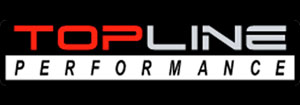She has been involved in the design from conception, contributing to the improvement in quality of the internal spaces for patients, staff and visitors.
delves into the challenges and breakthroughs in pharmaceutical manufacturing, exploring how new approaches like process intensification, automation, and continuous processing can lead to more agile, cost-effective, and environmentally friendly production methods.. Click the 'play button' above to listen in, or read our 5 Key Takeaways from this episode below.... 1.Revolution in small molecule API production:.

The episode highlights the transformative research and development in small molecule Active Pharmaceutical Ingredients, emphasising the generation of new, more complex, and targeted molecules.This revolution is pivotal for advancing the mainstay of essential medicines globally.. 2.Challenges in traditional manufacturing:.

Adrian La Porta discusses the limitations of current manufacturing practices, particularly batch chemistry, in meeting the modern demands for higher volumes, complex products, and faster production at lower costs, all while minimising environmental impact.He points out the inefficiencies and hazards of scaling up production using traditional methods.. 3.

Innovation in process intensification and automation:.
The podcast emphasises the shift towards process intensification and automation as solutions to the challenges faced by traditional manufacturing.And I think we have to quickly almost leapfrog over fabrication to productisation.”.
Marks says that productisation will free architects, empowering them to be “the true architects of the parameters, of the combination, of those elements.”.Additionally, she adds, given that not everything warrants productisation, architects will be able to spend more time doing the work they came into the industry to do - the more artistic work, and the work more specifically related to the end-user experience.. Jaimie Johnston agrees there’s a massive opportunity on offer for designers with industrialised construction.. “The people who write the standards don't necessarily understand the implications; clients want the value, but don't know how to do it; product producers have no product know-how to make the bits.
It should be the designers that are stitching all those bits together, understanding those standards, understanding what's available.That's a massive role.
